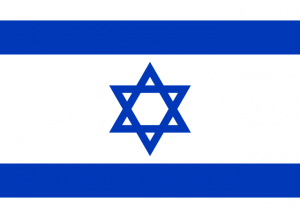Language/Hebrew/Grammar/Plurals
Hi Hebrew learners! 😊
In this lesson, we will dive into one of the most important aspects of Hebrew grammar - Plurals.
Table of Contents:
Introduction[edit | edit source]
Plurals play a fundamental role in Hebrew grammar. Mastering plurals in Hebrew is very important as they are involved in many aspects of the language. In fact, plurals are omnipresent in any written or spoken Hebrew sentences. However, this aspect of the Hebrew grammar is not as difficult as it looks at first sight. Unlike many languages, plurals in Hebrew do not require much memorization. Once you get a hold on the basic rules, you will be able to construct plural nouns almost automatically.
That being said, Hebrew plurals are indeed very diverse in form and structure. From simple plural forms to irregular plurals, Hebrew has a lot of variation to offer. Learning this essential aspect of Hebrew grammar opens up many possibilities to speak and write Hebrew correctly and blissfully.
Consider exploring these related pages after completing this lesson: Nouns, Future Tense, Reading Practice & Negation.
The Basic Rules of Hebrew Plurals[edit | edit source]
To start, let us look at the basic rules of Hebrew plurals. In Hebrew, nouns are mainly constructed by adding to the end of the word a specific ending. The plural endings in Hebrew can vary in form but the most common ending for masculine nouns is -ים (-im) and for feminine nouns is -ות (-ot). Here are some examples:
| Hebrew | Pronunciation | English |
|---|---|---|
| כלב | kelev | dog (singular) |
| כלבים | kelevim | dogs (plural) |
| שולחן | shulchan | table (singular) |
| שולחנות | shulchanot | tables (plural) |
If the noun ends with a vowel, then usually we add the plural ending -ים (-im) to create its plural. But if it is an irregular noun, the ending -ות (-ot) is used for both feminine and masculine nouns. For example:
| Hebrew | Pronunciation | English |
|---|---|---|
| איש | ish | man (singular) |
| אנשים | anashim | men (plural) |
| אישה | isha | woman (singular) |
| נשים | nashim | women (plural) |
Note that there are some unique nouns in Hebrew for which there are no solid rules to create their plurals. The best way to learn them is by example.
Plural Forms with Changes in the Stem Vowel[edit | edit source]
Hebrew plural forms can also affect the stem vowels of a noun. For example, some feminine nouns have a stem vowel that changes in their plural form. This can be somewhat tricky to learn at first, but it is a very important aspect of the Hebrew language.
| Hebrew | Pronunciation | English |
|---|---|---|
| כתובה | ktuva | document signing (singular) |
| כתובות | ktuvot | document signings (plural) |
| דרך | derech | road, way (singular) |
| דרכים | drachim | roads, ways (plural) |
Note that the sound of the plural ending can change depending on certain consonants that the noun ends with. For example, if the noun ends with the letter ק (-k), the plural ending would be -ים (-im) instead of -ות (-ot). For example:
| Hebrew | Pronunciation | English |
|---|---|---|
| לימוד | limud | learning (singular) |
| לימודים | limudim | learnings (plural) |
| דוב | doov | bear (singular) |
| דובים | doovim | bears (plural) |
Plurals of Nouns Borrowed from Other Languages[edit | edit source]
Another noteworthy aspect of Hebrew plurals is plural forms of nouns borrowed from foreign languages. These nouns can have some unique plurals that do not fit the regular pattern of Hebrew plurals. For example:
| Hebrew | Pronunciation | English |
|---|---|---|
| פיצה | pizza | pizza (singular) |
| פיצות | pitzzot | pizzas (plural) |
| חטיף | chetif | snack (singular) |
| חטיפים | chetifim | snacks (plural) |
Recap[edit | edit source]
Hebrew has a lot of variance when it comes to plural forms of nouns. However, the basic rules of masculine and feminine plural endings are easy to learn and apply. By mastering these basic rules, you can easily form plural nouns and improve your Hebrew vocabulary.
Remember that like any other language aspect, practice makes perfect! To improve your Hebrew Grammar, you can also use the Polyglot Club website. Find native speakers and ask them any questions!
Dialogue[edit | edit source]
For better understanding, let's explore plurals in context with a dialogue.
- Person 1: האם אתה יודע לאפות עוגיות? (Do you know how to bake cookies?)
- Person 2: כמובן! למעשה, אני אוהב לאפות עוגיות במיוחד. אני יכול להכין עוגיות ישראליות מסורתיות עם חמאה וריבת תמרים! (Of course! In fact, I love baking cookies especially. I can make traditional Israeli cookies with butter and date jam.)
- Person 1: זה נשמע מעולה! אז אתה משתמש בתוכן חמאה וריבת תמרים? (That sounds great! So you use butter and date jam in your cookies?)
- Person 2: כן, זה נכון! והתוצאה היא סיפוק מופלא. אפשר לאכול כמובן עם כוס תה חם! (Yes, that's right! And the result is amazing satisfaction. You can eat it with hot tea, of course!)
Sources[edit | edit source]
Other Lessons[edit | edit source]
- Personal pronouns and the present tense
- How to Use Be
- Nouns
- Conditional Mood
- Adjectives
- Verb to Have
- Negation
- Give your Opinion
- Future Tense

